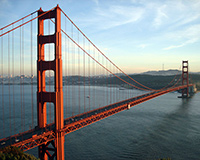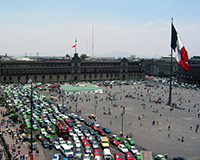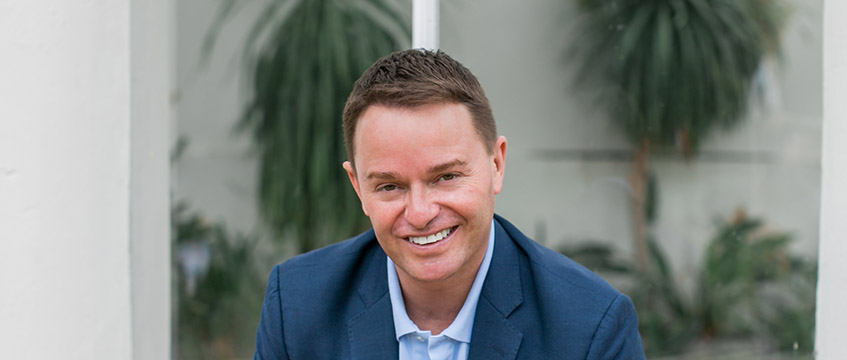 The economy is growing, jobs creation is happening and the property market is strong. so where should investors put their money?
The economy is growing, jobs creation is happening and the property market is strong. so where should investors put their money?
The US economy is “back on track”, says John Williams, president of the San Francisco Federal Reserve, who points to “good” annual growth of around 2% as well as an unemployment rate of 5% – half what it was at the height of the last recession – to support his optimism.
Job creation is on the up too, with the US adding roughly 200,000 new jobs a month for the past two years. At the same time, the country’s real estate industry is in fundamentally good shape.
Spencer Levy, CBRE’s Americas head of research, says: “The five major asset classes are all demonstrating very strong rent growth and occupancy improvement. The only area where we are concerned about a little bit of over-building is class-A apartments, but not on a national basis. There is actually a shortage of Bs and Cs.”
The Federal Reserve has not been shy of suggesting its positive economic performance might prompt interest rate hikes in the coming months, and property agrees. “I would bet on two rate rises in 2016: in September and in December,” says Levy.
Investment volumes of $111bn for the first quarter of 2016 were down by 19.8% on the same period in 2015, according to CBRE’s US Capital Markets 2016 report.
But rather than signify a sudden quelling in market activity, investment has reverted to a level similar to Q1 in 2013 and 2014, while Q1 2015 acquisitions volume was the second highest total since the mid-2000s, which served to magnify the change.
CBRE’s Americas Investor Intentions Survey 2016 found that 39% of investors intend to make more acquisitions this year than they did in 2015, versus 19% who said they expect their purchasing activity to decrease.
Meanwhile, the fortunes of neighbouring Canada are far from clear cut, with some business analysts comparing its economy to the split personalities of Dr Jekyll and Mr Hyde. And despite the 0.6% growth in GDP in January, the best month since 2013 and double what economists were expecting, it looks like Mr Hyde may be getting ready to make an appearance.
The Canadian office market started the year with vacancy rates reaching a decade-long high following a prolonged landlords’ market. Vacancy rates are likely to remain elevated for the foreseeable future too, thanks to an additional 11.2m sq ft under construction in downtown markets and 6.4m sq ft being built in the suburbs as of Q3 2015.
Commercial hotspots
Go for diversified markets, such as Los Angeles (see p20), New York and Dallas/Fort Worth – the top three cities in a poll identifying the leading metros for investment in the US.
“Los Angeles came out number one for a couple of reasons,” says Levy. “One, it was a bit of a laggard behind San Francisco and New York in its recovery. And two, we expect LA to have the most new jobs formed in the next two years, and many of those are high paying because of the concentration of the media industry.”
There are record levels of construction in the pipeline (16.8m sq ft) in Mexico City, reports Cushman & Wakefield. A marginal year-on -ear increase in vacancy rates in its office market of 1.1 percentage points comes despite significant expansion of the city’s inventory, and class-A absorption reached 335,500 sq ft in Q1.
Residential hotspots
Residential opportunities tend to track the same as commercial, but extend beyond the CBDs, with many seeing their suburban markets strengthen.
“Even though most of the trends you read say everything is about urbanisation, it’s not. Some people are considering the suburbs,” says Levy. “In and around the major CBDs is where we are seeing most of the construction, even in some secondary markets, like Cleveland, Cincinnati and Minneapolis. The multi-family construction story is probably the most widespread of all the different asset classes.”
Growth areas
It comes as no surprise to see multi-family pip industrial to become the most popular property class, according to CBRE’s survey. The results saw 28% of respondents pick it as their first choice. Offices held second place with 24%, and industrial came third with 23%.
Risks & challenges
The US election is likely to cause some volatility between now and November, and the industry should factor in the risk of global shocks from emerging markets and powerhouses such as China, says Levy.
But the biggest area to be cautious of, he says, should be concentrated markets in energy, tech or other industries that are showing signs of weakness. These include tech hotbed San Francisco and energy-dependent Houston, which have both seen a rise in subletting activity.
Must-have contacts
Yolande Barnes, head of world research, Savills, ybarnes@savills.com
Scott Chandler, senior vice president, advisory and investment sales, Toronto, Colliers International, scott.chandler@colliers.com
Spencer Levy, head of research Americas, CBRE, spencer.levy@cbre.com
Robert Hoefer, director of research, Cushman & Wakefield, robert.hoefer@cushwake.com
 City guide: Mexico City
City guide: Mexico City
Overview
The exact definition of North America includes Mexico, which may surprise some. But it is part of the continent and Mexico City is at the forefront of growth in one of the world’s leading emerging economies. The city is already one of the largest in the world and, with a growing population set to hit 24.3m people by 2050, there is no end in sight for demand.
Why invest?
Better than expected GDP growth of 0.8% in the first quarter of the year, and the expansion of the service industry and industrial production by 3.7% and 0.7% respectively will boost the economy.
The numbers
13 shopping centres to be constructed this year
13.2% office vacancy rate
29% expected increase in demand for office space
The opportunities
FIBRA, a government-run infrastructure and real estate trust – the Mexican equivalent to the real estate investment trusts in the US – has invested in almost 4m sq ft of leasable space in the metropolitan area, creating indirect investment in real estate. The retail industry is booming thanks to a growth in the demand for quality goods and services, with 13 shopping centres set to be constructed throughout the city in 2016. More than 20 new office buildings were constructed in 2015, with demand for office space set to increase in 2016 by a further 29%.
Stand-out scheme
A new six-runway airport is expected to begin operations in 2020, replacing the overcapacity Benito Juárez International Airport. The new project, which will have capacity for 120m travellers per year, is being built on government-owned land to the east of the city at a cost of $9.16bn.
Top tips
- There are dangerously high levels of smog, prompting regular driving restrictions on privately owned vehicles.
- The city’s altitude is 7,380 ft.
- Visit the Estadio Azteca, the scene of Maradona’s infamous “hand of god” goal against England in the 1986 World Cup.










